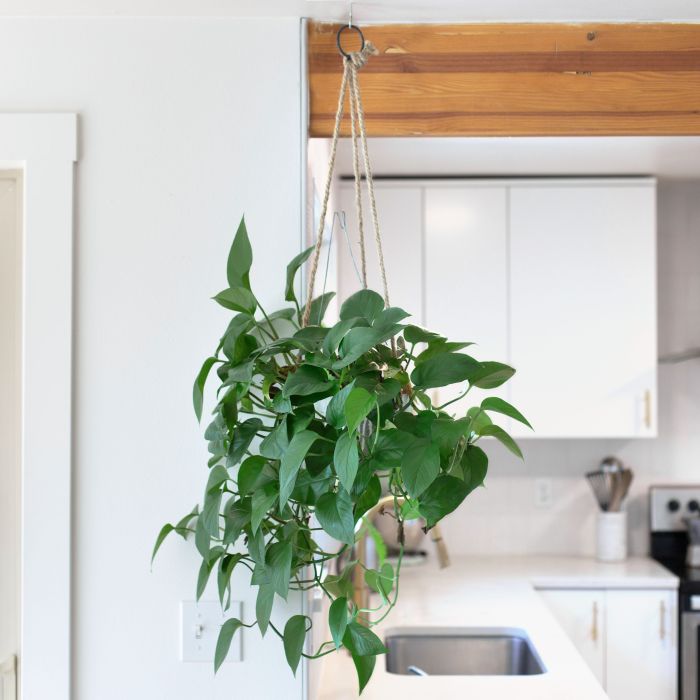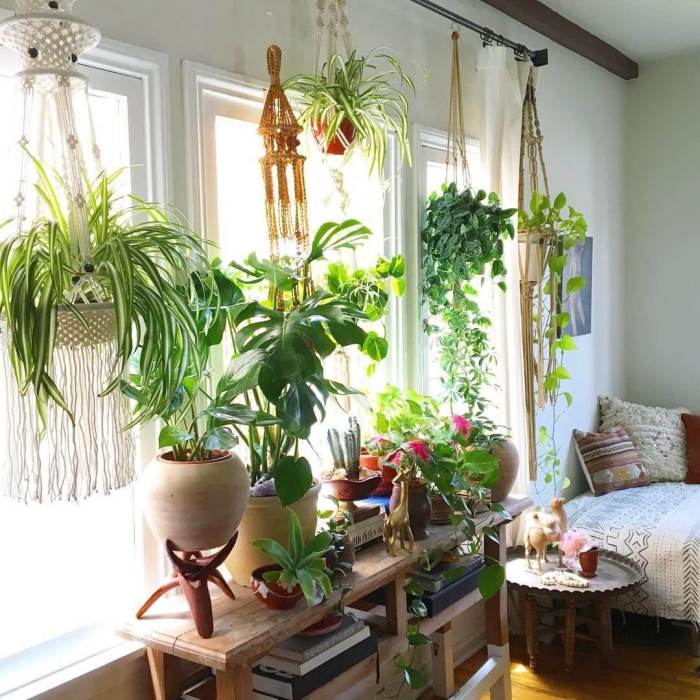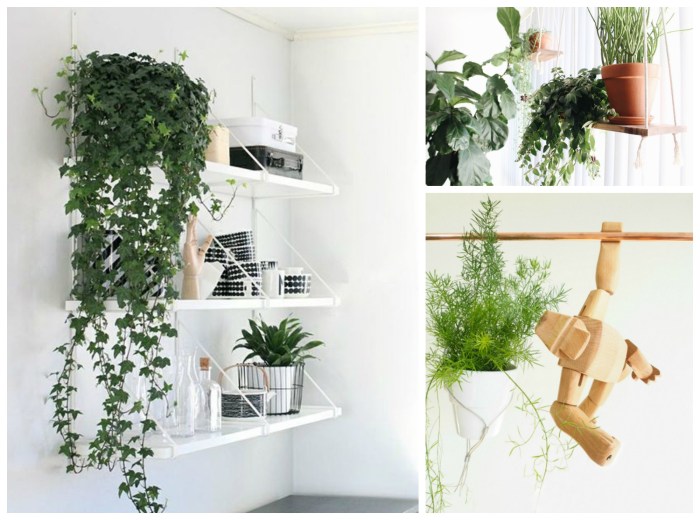Where to put hanging plants is a question that every plant enthusiast has asked themselves at some point. These versatile plants can add a touch of greenery and life to any space, but finding the right spot for them can be tricky.
This guide will provide you with all the information you need to know about where to put hanging plants, both indoors and outdoors.
When choosing a location for your hanging plants, there are a few things to keep in mind. First, consider the amount of light the plant will receive. Most hanging plants prefer bright, indirect light, but some can tolerate low light conditions.
Second, think about the temperature and humidity of the space. Hanging plants prefer warm, humid environments, so if your home is particularly dry, you may need to mist your plants regularly.
Indoor Locations

Hanging plants add a touch of greenery and life to indoor spaces, but finding the right location is crucial for their well-being and aesthetic appeal. Indoor environments offer varying conditions, such as natural light, temperature, and humidity, which influence plant growth and appearance.
Areas with ample natural light, such as near windows or skylights, are ideal for hanging plants that require bright indirect light, such as spider plants, pothos, and ferns. These locations provide the necessary energy for photosynthesis, promoting healthy growth and vibrant foliage.
Living Room
Living rooms often provide suitable conditions for hanging plants, as they typically have large windows or access to natural light. Plants that tolerate lower light levels, such as peace lilies, snake plants, and ZZ plants, can thrive in areas with less direct sunlight.
Hanging these plants near seating areas creates a cozy and inviting atmosphere.
For those seeking to add a touch of greenery to their homes, hanging plants offer a versatile and stylish solution. Whether suspended from ceilings, walls, or even balconies, these plants can bring life to any space. However, before you embark on this decorative journey, it’s essential to consider the question: can hanging plants be potted? The answer lies in this comprehensive guide , which delves into the specifics of potting hanging plants, ensuring they thrive and beautify your living spaces.
Kitchen
Kitchens can be challenging environments for hanging plants due to fluctuating temperatures and humidity levels. However, certain species, such as spider plants, ferns, and succulents, can adapt to these conditions. Placing hanging plants near windows or above the sink provides access to natural light and humidity, promoting their growth.
When deciding where to put hanging plants, consider the feng shui of your home. While hanging plants can add life and beauty to a space, they can also disrupt the flow of energy if placed incorrectly. According to feng shui principles, hanging plants should be placed in areas where they can receive plenty of sunlight and avoid blocking doorways or windows.
Are hanging plants bad feng shui ? Not necessarily, as long as they are placed in a way that promotes positive energy flow. By following these guidelines, you can enjoy the benefits of hanging plants while maintaining the harmony of your home’s feng shui.
Bathroom
Bathrooms offer high humidity levels, making them suitable for plants that thrive in moist environments. Ferns, air plants, and orchids are excellent choices for hanging in bathrooms, as they appreciate the humid atmosphere. Placing these plants near windows or shower areas provides both light and moisture, creating a lush and vibrant ambiance.
Outdoor Locations: Where To Put Hanging Plants
Expanding the verdant horizons of your home, hanging plants can transform outdoor spaces into vibrant oases. By carefully considering factors such as sun exposure, wind, and rainfall, you can create a flourishing haven for your botanical companions.
Optimal Outdoor Locations
- Patios:Sheltered from the elements, patios offer an ideal setting for hanging plants that prefer partial shade or filtered sunlight. Consider trailing varieties like ivy or ferns to create a cascading effect.
- Balconies:With ample sunlight and good air circulation, balconies are perfect for sun-loving plants like succulents, petunias, or geraniums. Choose hanging baskets with drainage holes to prevent waterlogging.
- Gardens:Offering a wide range of microclimates, gardens allow you to accommodate a diverse array of hanging plants. Position shade-loving plants under trees or near walls, while sun-tolerant varieties can thrive in open areas.
Factors to Consider
- Sun Exposure:Determine the amount of sunlight your outdoor space receives throughout the day. Choose plants that are well-suited to the specific light conditions.
- Wind:Strong winds can damage delicate plants. Consider hanging baskets with wind-resistant species like trailing begonias or trailing lobelia.
- Rainfall:Heavy rainfall can lead to waterlogging, so select plants that can tolerate moisture or choose hanging baskets with good drainage.
Hanging Structures

Hanging structures offer a practical and stylish way to display plants in both indoor and outdoor spaces. From intricate macrame hangers to sleek wall-mounted brackets, there’s a wide range of options to suit different plants and locations.
Hanging plants can add a touch of greenery to any space, but where’s the best place to put them? For a touch of rustic charm, consider hanging pots on your fence . Not only will they add a decorative touch, but they can also create a sense of privacy.
When choosing where to hang your plants, consider the amount of sunlight they’ll receive and the height of the fence. You’ll also want to make sure they’re out of the reach of children and pets.
Macrame Hangers
Macrame hangers, made from knotted cords or yarn, add a bohemian touch to any space. They come in various sizes and designs, providing ample support for both small and large plants. The open weave allows for proper air circulation and drainage, making them ideal for plants that prefer moist soil.
Plant Shelves
Plant shelves, typically made from wood or metal, offer a sturdy and versatile solution for displaying multiple plants at different heights. They can be hung from the ceiling or mounted on a wall, allowing for flexibility in placement. Plant shelves are particularly suitable for trailing plants that cascade over the edges.
Wall-Mounted Brackets
Wall-mounted brackets are a minimalist option for hanging plants. Made from durable materials like metal or plastic, they provide a secure and discreet way to suspend plants. Brackets are available in various shapes and sizes, accommodating different plant sizes and growth habits.
Choosing the Right Hanging Structure, Where to put hanging plants
The choice of hanging structure depends on several factors, including the size and type of plant, the desired placement, and the overall aesthetic. For plants that require ample support, macrame hangers or plant shelves are suitable. Wall-mounted brackets are ideal for smaller plants or those with trailing stems.
Plant Selection

Choosing the right hanging plants is crucial to ensure their health and aesthetic appeal. Several factors should be considered, including size, growth habit, and light requirements.
Popular Hanging Plants
- Indoor:Pothos, Spider Plant, String of Pearls, Philodendron, Air Plant
- Outdoor:Petunia, Begonia, Fuchsia, Geranium, Ivy
Each type of hanging plant has specific care requirements, such as watering frequency, sunlight exposure, and fertilization needs. It’s essential to research the specific plant before purchasing to ensure you can provide the proper care.
Design Considerations
When incorporating hanging plants into a space, aesthetic considerations play a crucial role in creating a harmonious and visually appealing ambiance. These considerations encompass the use of hanging plants as focal points, the addition of color, and the enhancement of the overall atmosphere.
Hanging plants can serve as striking focal points, drawing the eye upwards and adding a touch of drama to a room. By suspending them from the ceiling or mounting them on walls, they create a sense of height and depth, making a space feel larger and more dynamic.
Additionally, their cascading foliage and intricate shapes provide a captivating visual element that can transform an ordinary room into an extraordinary one.
Color and Ambiance
Hanging plants offer a versatile way to add color and enhance the ambiance of a space. Their lush greenery can bring a sense of freshness and vitality to a room, while their vibrant blooms can add pops of color that create a cheerful and inviting atmosphere.
By choosing plants with different leaf shapes, textures, and colors, it is possible to create a visually stunning display that complements the existing décor and reflects the desired ambiance.
Combining Plants
To achieve a cohesive and visually appealing display, it is essential to carefully combine different types of hanging plants. Consider the size, shape, and color of each plant, as well as its growth habit and light requirements. For instance, pairing a trailing plant with a more upright variety can create a dynamic and eye-catching effect.
Additionally, grouping plants with similar colors or textures can create a sense of unity and harmony, while contrasting colors and textures can add visual interest and depth.
Final Conclusion
Hanging plants are a beautiful and versatile way to add greenery to your home or garden. By following the tips in this guide, you can find the perfect spot for your plants to thrive.
Q&A
What are the best indoor locations for hanging plants?
The best indoor locations for hanging plants are those that receive bright, indirect light and have warm, humid temperatures. Some good options include living rooms, kitchens, and bathrooms.
What are the best outdoor locations for hanging plants?
The best outdoor locations for hanging plants are those that receive partial shade and have good air circulation. Some good options include patios, balconies, and gardens.
What are the different types of hanging structures for plants?
There are a variety of different hanging structures available for plants, including macrame hangers, plant shelves, and wall-mounted brackets. The best type of hanging structure for your plant will depend on the size and weight of the plant, as well as the desired look.